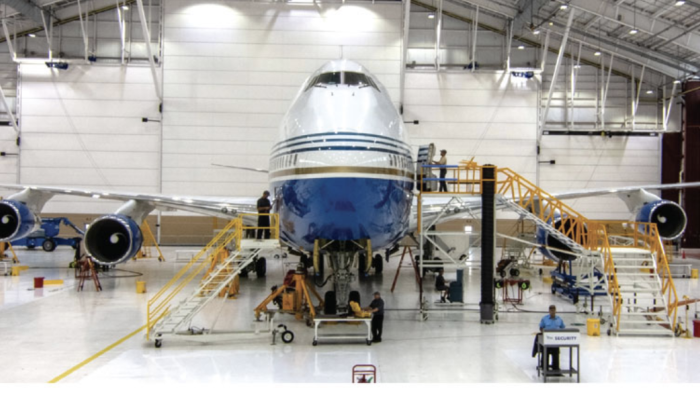London, Ontario, Canada-based Advanced Composites Training Institute (ACT), a division of Renaissance Aeronautics Associates, has announced it is adding two new courses for 2012: Composites for General Aviation Pilots and Composites for Commercial Aviation Pilots.
The company also announced it has completed renovation of its new facility, upgraded specifically to support the company’s composite training mission.
“Previously, we would rent space as needed on the airport to teach classes. We had an arrangement with a local tenant to use a small classroom and some hangar floor space. We’ve now moved into our own 4,000-square-foot facility with two classrooms, a clean pressurized lab with filtered air so there is no contamination inside and a second production room, where any dust and debris generated is trapped and not allowed to contaminate the rest of the facility,” Wilson Boynton, president of Renaissance Aeronautics Associates, told AIN.
Boynton, a Canadian aircraft maintenance engineer, started Renaissance Aeronautics Associates in 1992 to do composite structural repair in the aviation, wind energy, marine and automotive markets. In 1996 he added ACT as a division of the company to teach composite technologies for manufacturing and repair of aircraft structures.
“We saw a desperate need for this type of training in all segments of aviation: military, corporate, airline and general aviation. As far as we can tell, there is no one conducting composite training at this high a level in Canada or, for that matter, anywhere else in the world,” Boynton said. “We are the only organization that has full accreditation from FAA and the Canadian Council for Aviation and Aerospace.”
Boynton explained the reason composite training is so important is because it has almost no similarity to the metal structure technology historically used in aircraft manufacturing. Technicians are used to mechanical work, such as fabricating aluminum and steel. Composite work is chemistry.
“It’s critical to clearly understand the processes and quality-control issues associated with composite structures. It is possible to structurally harm composite material in the mixing and in the laminating processes and have no visible way to detect it. You can end up with a finished product that looks fine but doesn’t have the appropriate structural properties and integrity. Quality control is a major subject in all our courses,” Boynton said.
ACT has four full-time instructors and an additional five instructors on call. The company also partners with Dassault Falcon to teach a course in nondestructive inspection of composite and bonded aircraft structures. “This is a one-of-a-kind program. We work with Tim Kinsella, Dassault’s nondestructive program manager, and offer it three times a year,” he said.
ACT offers 15 different five-day courses, 13 of which are accredited by the FAA for IA renewal. “We limit our class size to 15 students. The courses are intensely concentrated programs; each takes a full 40-hour week. We get students from all over the Americas, Asia, Europe and the Middle East. We also take our courses on the road and have taught them in places such as Singapore and Abu Dhabi, in addition to cities all across North America,” he said.







